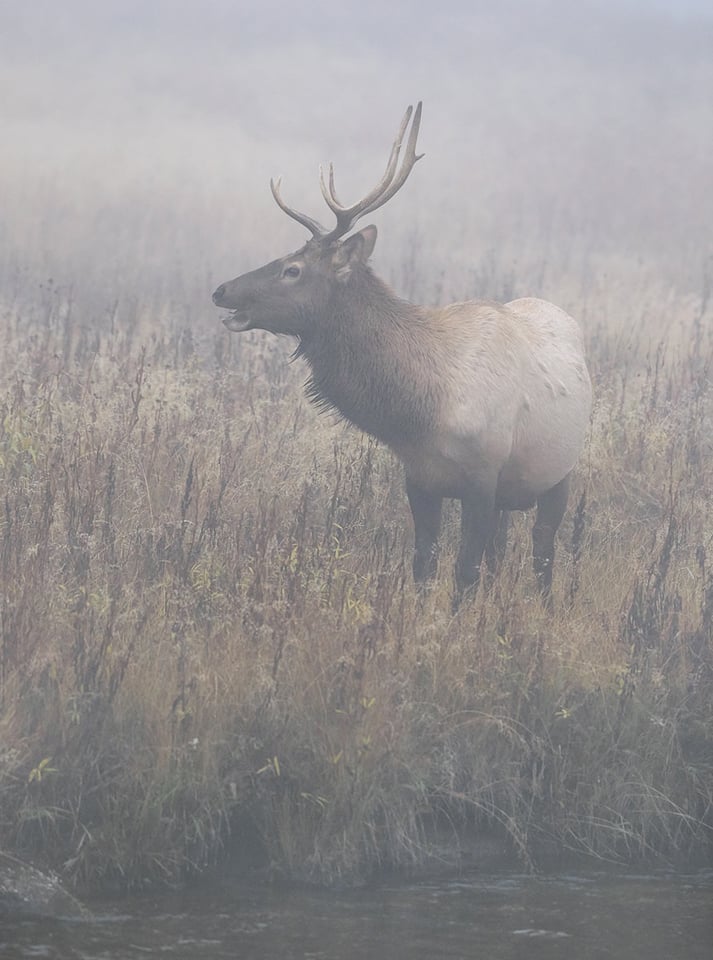Photographic Focus: Elk, Bison, Wolf, Coyote
Best Time: Early Morning and Afternoon
Season: Year-round
An everlasting icon that has come to represent Yellowstone, the Old Faithful Geyser still dazzles visitors with it’s almost hourly propulsion of water over 30 meters into the air. The seemingly timeless geyser might be the soul of the Upper Geyser Basin in which it sits, but the basin’s heart is the Firehole river which cuts through it like a winding spinal cord. Along the rivers banks, one can find the largest concentration and nearly one quarter of all the geysers in the world as well as an extensive network of thermal features and hot springs.





Once it leaves the Upper Geyser Basin at Biscuit Basin, the Firehole river flows north with the Grand Loop Road paralleling the river throughout most of its journey. Right after Biscuit Basin the river crosses an area of rich meadows which often host a good number of Elk. They are best photographed on chilly mornings due to the area becoming shrouded in steam from the surroundings hot springs and the river itself.

The river continues flowing through meadows which give way to sparsely forested sections of lodgepole pines until it makes a very distinct U-turn just before it reaches the Midway Geyser Basin. The basin itself is rather contained but it houses two immense thermal pools of which one is the famous Grand Prismatic Spring.

Further north the landscape begins to flatten into wide meadows known as the fountain flats. This region hosts a multitude of Geyser Basins, but it is the meadows in this region that are of interest to those looking for wildlife. A common sight here are herds of American Bison which are especially photogenic during the early morning hours.




While the area is not known for it’s high density of predators. I have found the meadows of the fountain flats to sometimes yield unlikely surprises, such as Grey Wolves.

The world’s largest wild canid, the iconic Grey Wolf has long been a source of both fear and reverence, inspiring countless tales throughout human history. In appearance, the species can sometimes resemble a large domestic dog, but when seen up close, their long narrow legs, large feet, straight tail and unforgettable eyes make it obvious that they are very much wild. Once exasperated from the entirety of the ecosystem in Yellowstone due to human hunting, the species had been reintroduced in the 1990s when 41 wolves from Northern Montana and Canada were introduced into the park. Since then, their numbers have strengthened and today there are over 100 wolves inside the park and over 500 in the greater Yellowstone Area. Wolves are territorial and the 100 or so wolves found inside the park boundaries are broken down into 11 distinct packs. Each pack controls over an area that varies from 300 to around 500 square kilometers with the size of the area dependent on the number of individuals in the pack along with the food availability and the seasonal changes. The meadows of the Fountain Flats are part of the southern range of the Canyon Wolf Pack whose territory extends all the way to the Mammoth region in the North. They can sometimes be seen here along the tree line, preferring to keep their distance from any would be photographers.



Table of Contents

